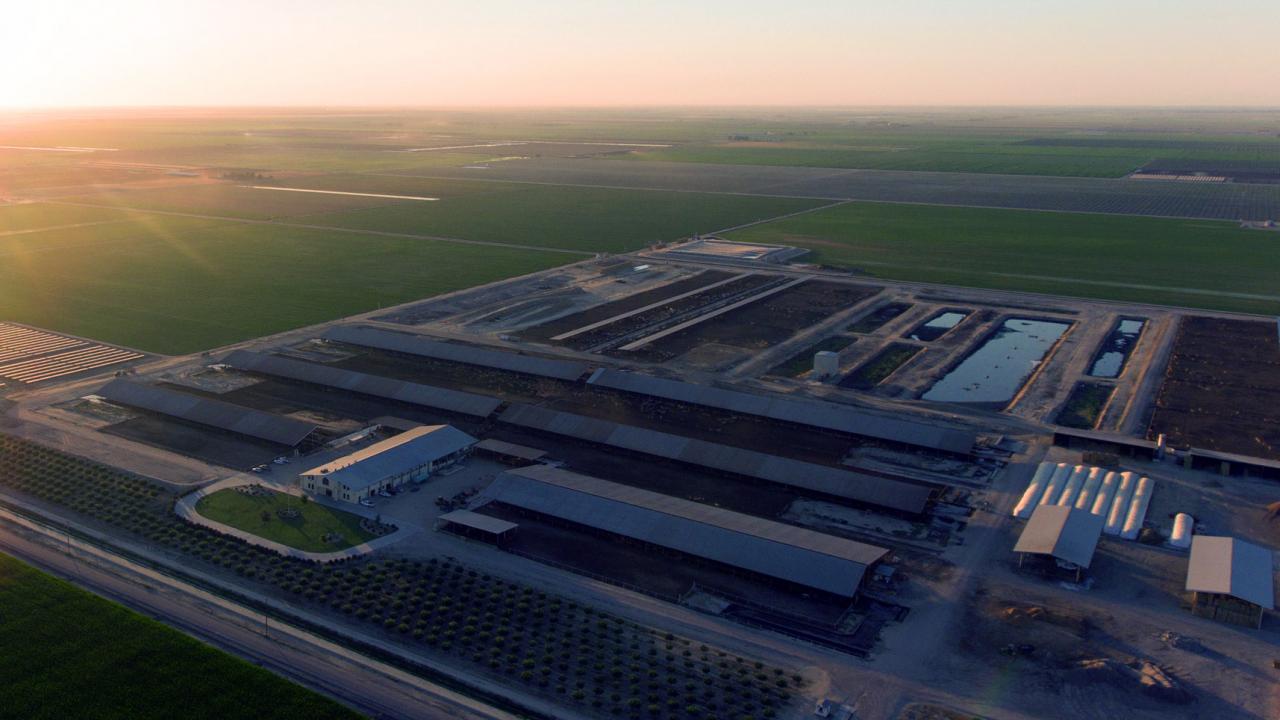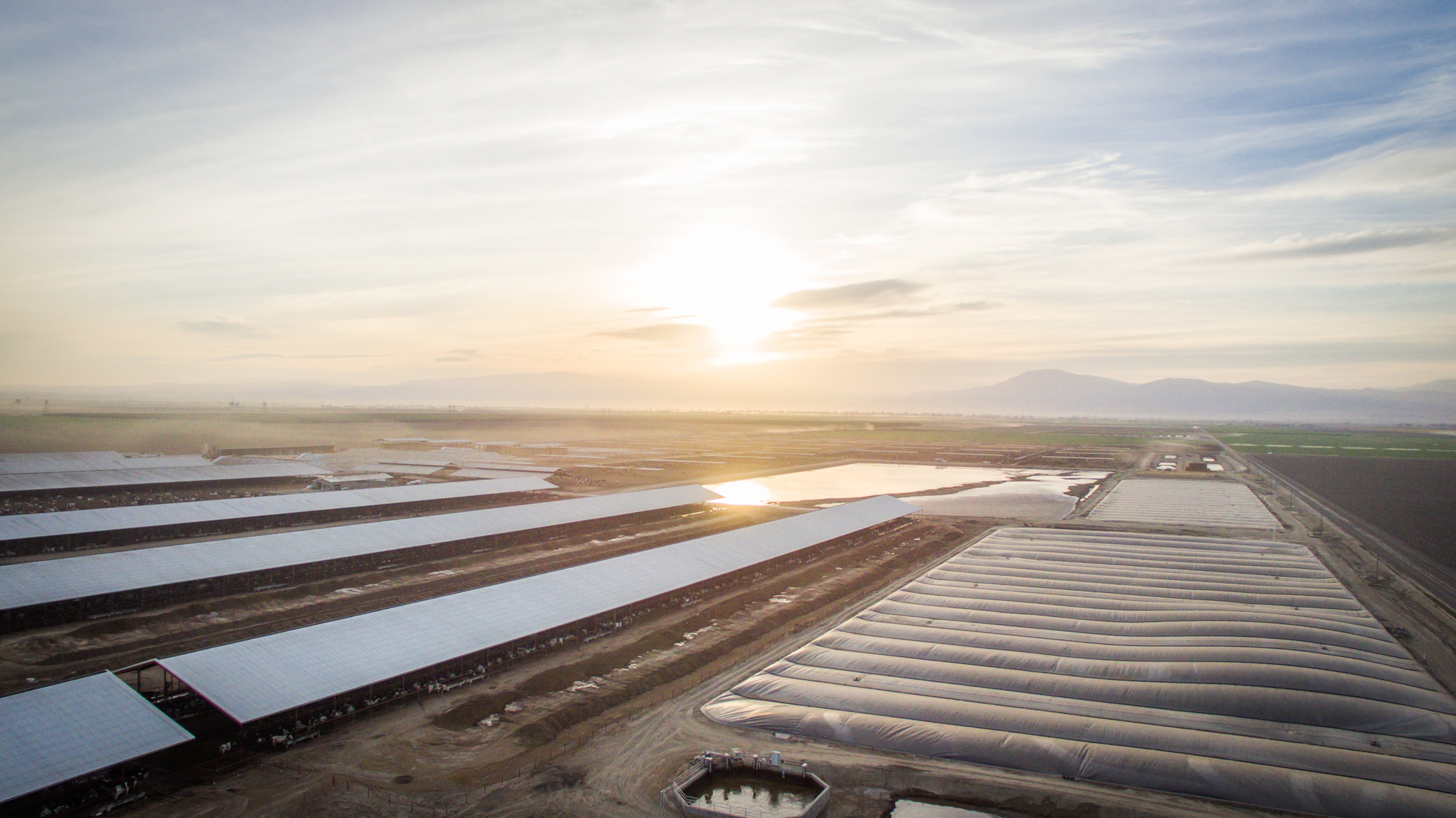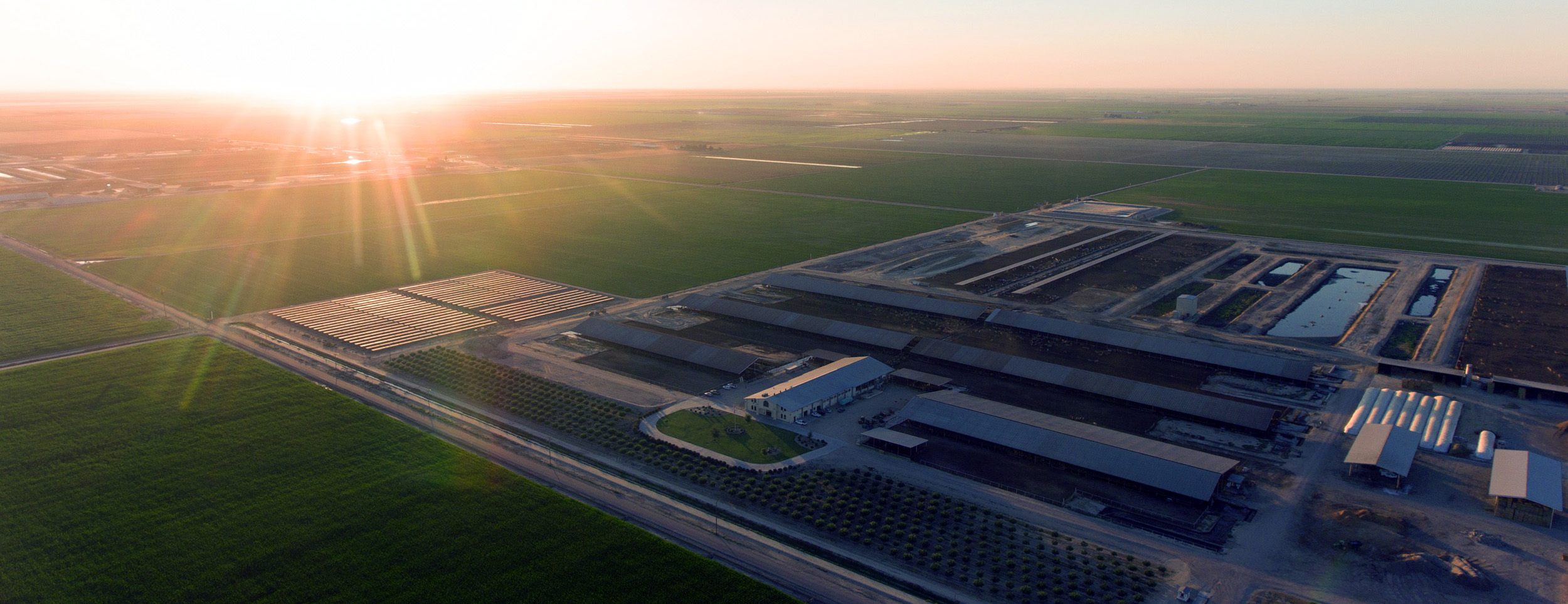
How handling manure waste from dairy cattle impacts greenhouse gas emissions and climate change
By Alice Rocha
Waste is inevitable when manufacturing goods such as clothes, electronics, and food. In the case of livestock, like beef and dairy cattle, that waste comes in the form of manure and urine. Much like taking the trash out at home, manure and urine must be managed. Manure management encompasses how manure is collected, treated, stored, and, in a lot of cases, used as a fertilizer and soil amendment. It is an essential part of the animal production system, including food safety, ensuring that the animals are healthy and clean within their environments. Within an intensive system, such as working with dairy cattle in barns, manure must be dealt with productively.
Animal agriculture caters to many different species that all produce feces and urine in different amounts and characteristics, which require different types of manure management. The inherent diversity of the livestock industry is both a benefit and an obstacle to manure management. A management system for poultry manure wouldn’t work for cattle manure, since it has different composition and volume. Therefore, it is important to acknowledge that not all systems are created equal nor do they work for all species. For the sake of simplicity, this article will focus on manure management related to intensive dairy cattle systems.
More often than not, with the exception of organic and pasture-based farms, dairy cattle are typically confined within large barns that provide comfort and protection from the sun and rain. In the last few years, the number of dairy cattle has been decreasing as production becomes more efficient, but the size of individual farms is actually increasing. Because of this, there is more manure being produced within smaller areas. This can cause environmental concerns if not dealt with properly. Manure contains high quantities of nitrogen (N) and phosphorus (P). When not properly managed, these nutrients can leach into groundwater or soil, leading to acidification of soil and eutrophication of waterways. Eutrophication occurs when waterways are overly saturated with nutrients, leading to harmful algal blooms that deplete the oxygen content causing fish dying and aquatic habitat losses. However, applying precise management plans can reduce or eliminate potentially negative environmental impacts.
Manure collection and storage
The first step in manure management is collecting it. Manure and urine are deposited in wide alleyways between feed bunks where an animal eats and free stalls, where they sleep. Manure is collected various ways: by scraping the floors with long, wide automated shovels or robotics; vacuuming using vacuum trucks; or flushing with water – or a combination of these techniques. Flushing is commonly used on California dairies and helps reduce emissions of different gases when flushed manure is stored in lagoons. Flushing does require water, which in California can be a challenge given the frequency of drought. Even so, flushing is an essential manure management tool because it helps prevent certain gaseous emissions. Scraping and vacuuming, on the other hand, may leave thin layers of manure on the ground which can come in contact with cattle urine causing the emission of ammonia. The latter is generated by a reaction between urea in urine and the urease enzyme in manure. Ammonia is a corrosive gas that has negative environmental and health effects like irritation of eyes, throat, lung damage, even death. It can also cause rust and wear on concrete and metals that can be expensive to farmers. Using manure flushing helps reduce ammonia emissions from the barn, eliminating their negative effects.
Traditionally, flushed manure is stored in a lagoon, vast basins dug into the earth that are designed to hold flushed manure until it is used for irrigation. Some dairies use lagoon water for flushing manure from barns. Lagoons are a major source of methane emissions from dairies.
Biodigesters to mitigate greenhouse gas emissions
Methane is a potent greenhouse gas (GHG), which contributes to global climate change. Even so, the dairy industry has been using new tools to mitigate these emissions. One such technology for mitigating methane emissions is an anaerobic digester. Inside a digester, manure undergoes biochemical processes, similar to those occurring in lagoons, that convert organic matter in manure into biogas. Biogas is composed of 60 percent methane and 40 percent carbon dioxide. The resulting biogas can be used to power vehicles, generate electricity, heat homes, or as renewable natural gas.

There are several types of anaerobic digesters that can be used at dairies. The most common are covered lagoon digesters, which are created by installing liners and leak-proof covers over existing lagoons. The California Air Resources Board (CARB) estimated a decrease of 2.2 million metric ton per year in GHG emissions from manure management due to the use of anaerobic digesters. Size, capacity and biogas is use depends on the farmer. Anaerobic digesters can be quite expensive to build and maintain, so they are often funded through federal grants and loans that help farmers purchase this manure management tool.
In addition to digesters, the California Department of Food and Agriculture launched an initiative to support non-biodigester endeavors in 2017 called the Alternative Manure Management Program (AMMP). These alternative techniques include separating solids from manure before depositing the liquid manure into the lagoon. In doing so, managing waste becomes easier for the farmers and helps to reduce greenhouse gas emissions in the state by about 219,143 mega tons of CO2 per year. The separated solids can be composted and recycled into bedding for animals.
Manure processing for fertilizer and compost
Traditionally, manure is used as a fertilizer or soil amendment either directly by using liquid manure (either before or after anaerobic digestion) with irrigation water or after composting of solid manure. Manure is an excellent source of nutrients for plants. It is high in nitrogen, phosphorus, and potassium, which are essential nutrients for plant growth. This means that plants cannot grow without them. While nitrogen, phosphorus, and potassium can be found in healthy soils, farmers, gardeners, horticulturalists, and even backyard veggie enthusiasts often need a little boost on their land.
That being said, it would be irresponsible to start applying manure without first checking the conditions of a soil. These nutrients, if excessively applied, can cause environmental problems. This is the case for a large-scale crop farm and for a small home garden. It may not be often, however, that a homeowner will go out and purchase manure to fertilize a garden. Farmers, on the other hand, will.
Many dairy farmers own or rent crop land used to grow feed for their cows in order to avoid additional expenses. The manure comes from their own cattle and helps improve the quality of their soils in order to grow more feed. Again, this must be done with precision and management. Like feeding a pet, you would not want to give them too much food or else they will gain unhealthy weight. Farmers need to regularly check the nutrient requirements of their plants, the pH of their soils, and ensure that they apply only as much as is needed for that specific parcel of land.
Aside from fertilizer, manure can also be transformed into compost. This is an excellent option when the manure is either unsuitable for application directly to land or perhaps there is not sufficient land for the amount of manure available. Compost differs from raw manure because it releases nutrients more slowly, therefore the risk of nutrient leaching is diminished. Compost also helps reduce the odors associated with manure, is easier to handle because it is lighter, and provides another way of storing manure until it is ready to be used.
Manure is a co-product, not waste
Ultimately, manure management is complex, yet essential for sustainable production of milk and meat. Depending on the type of manure (i.e. cattle vs. poultry), how much is being produced, where it is being produced, availability of land, proximity to waterways and many other factors all influence how manure can and should be managed in order to minimize adverse effects to the environment. All livestock farmers must consider these factors, not just dairy farmers. There are various techniques and technologies available to help farmers manage manure. However, increasing their efficiency and creating new technologies for manure management are always needed. That being said, manure is a co-product of animal production, not waste. Changing our perspective to see the value in manure is vital to continuously improving management techniques and developing novel means of putting it to use.
Alice Rocha is a Ph.D. student in Dr. Frank Mitloehner's lab at UC Davis

Methane, Cows, and Climate Change: California Dairy's Path to Climate Neutrality
UC Davis White Paper Re-Examines Methane’s Role in Climate Change, and How California Dairy Can Achieve Climate Neutrality
